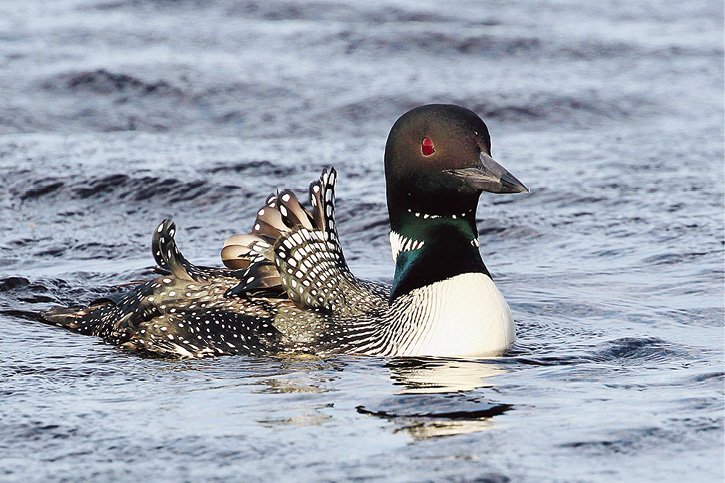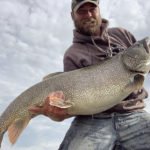Loons have been a part of the northwestern Ontario outdoor experience for as long as I can remember. The haunting sound of the loon call, and the way it echoes through the lake, is something that stays with anyone who has experienced it.
Loons are a beautiful bird in the water, sleek and graceful, perfectly suited to their environment. They swim effortlessly and can disappear for what seems like many minutes at a time under the water. As a kid, I can recall being in a canoe and seeing a loon vanish more than 100 yards away. Then as if by magic, that loon appeared just a fishing rods length away from the boat, looking at us as if to say, “this is my lake, fishermen.” And just as soon as that loon was there, it was gone again.
The loon is ideally suited for chasing down fish and can go to significant depths to catch them. I found this out as a teenager working for the Ministry of Natural Resources and Forestry. My summer job was to set out nets in different lakes around the region and then pull them out the next day. Another summer student and I then went about counting, weighing, measuring and recording every fish that was caught. Not always the most exotic work in scorching summer heat. One time, we had a deep water set and as we pulled it in, we could feel some weight in the mesh. We assumed it was a laker or pike but when it came over the side it was a loon that had dived down at least 50 feet and got caught. An unfortunate end for that loon, but testament to the amazing ability they have to dive.
That net incident wasn’t the last time I would be surprised by an unexpected loon appearance. When I started muskie fishing in the 1980s, one of the weapons of choice was a lure called an Eagle Tail. This lure was a spinner with a multi hook, black bucktail dressing and a large silver, red or chartreuse spinner. In total, the Eagle Tail measured about 9 inches in length and looked very much like a wounded bait fish in the water. The technique was to cast the spinner out, then reel it back quickly to the boat. The hope was that the fast-moving spinner would trigger a big muskie to ambush the lure. Sometimes a muskie would follow the lure right to the boat and you would perform something called a figure eight to try and get the fish to strike. One memorable time, I thought I saw a muskie following and got ready to put my rod tip in the water and perform the figure eight. Yet what I thought was a muskie turned out be a loon in hot pursuit of the spinner. The bird was inches away from creating all sorts of grief for both of us, but the spinner was pulled away just in time. Several times since I’ve had loons rocket in after lures, but nothing drew them like the Eagle Tail did.

Loons, while primarily a peaceful bird, can also create quite a lot of commotion and noise when they want to. If you’ve ever seen a loon get up in the water and start displaying, you don’t forget it. On one northwestern Ontario brook trout lake, my partner and I got a little too close to a loon nest we had no idea was there. A male loon quickly appeared with chest up and wings outstretched, screeching and splashing at us with a call that was in no way soothing. The bird would come right to the canoe, looking quite intimidating and very pissed off. We were mortified, since we had no interest in disturbing a nest or a loon. We paddled away as quickly as we could, with the ornery loon hot on our trail. Later, once things had calmed down, we watched from a safe distance as that same loon—now with its mate—gave the chick a ride on its back on the lake. It was a gorgeous, placid sight and a far cry from what we experienced just a few hours earlier.
Loons can also be quite aggressive with each other. More than once I’ve watched as two male loons have fought with each other over some unseen territorial line on a lake. The loons will grab beaks, wings outstretched, and battle it out like UFC fighters, twisting, biting and pecking at each other for quite some time. It is dirty fighting and can be deadly. I’ve found several dead loons in lakes over the years, likely the losers in a battle for supremacy over some especially productive bay or shoreline.
Loons are, of course, mostly a source of joy for those of us who spend time on the water. The sight of a loon—or many loons—is always a thrill. In the fall, on Lake Superior I’ve witnessed huge groups of loons rafted up together before they begin the migration south. It is a magnificent sight. Loons begin to lose the summer plumage in the fall and take on quite a different look. Yet the loon call never changes.
Nothing signifies the wild of the north quite like the soaring, haunting call of the loon. May it always be so.




